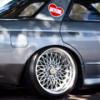Stock Turbo Failure
Announcements
-
Similar Content
-
Latest Posts
-
Have you tried another indicator stalk? Sometimes these go bad and cause issues.
-
Early last week, I became concerned that the car was feeling....slow. Most of my driving is commuting to/from work and there are few opportunities to get up it and convincingly make boost/power. It drives in vacuum almost all the time. But when you do occasionally get an opportunity, and.... it takes a little longer to start making power, and then there's not as much as you'd expect, and then you run out of road anyway and have to bottle out - it can be hard to be convinced that there's something wrong. But by the end of the week I was pretty convinced. Made an effort to get a decent test run. Took bloody forever to come up on boost and when it did it would only make about 50 kPa of pressure. There was no black smoke, no noise of a boost or exhaust leak, no evidence anywhere of an intercooler hose clamp being sloppy enough to let air escape. So.... not that sort of problem. Brainstorming led to thinking that the boost controller's solenoid might have failed in some way. No active boost control would just give wastegate pressure, which I was more or less getting, and the laggy behaviour could just be "normal" shitty boost response from an uncontrolled highflow. But a little extra 3rd party brainstorming led to the thought that the actuator circlip might have jumped off leaving me with a bluetooth wastegate. So, on Friday, off comes the stock heatshield (which is an annoying enough job on its own) to reveal - yup. WG is wide open. And.... it won't come back. It is jammed in the dump. Put the rod back on with a new circlip and tried driving it to get it hot in the hope that the capture was from thermal effects having been blown into the dump when hot and since cooled. Nope. Won't move, even with screwdriver mediated force when hot. Ran out of time to play. Came back to it yesterday. Unbolted the dump. Was lying under it with the dump jammed up against my guts undoing the bottom 2 bolts. Got them most of the way out and gave the dump a serious heave. It didn't noticeably move, but there was a satisfying "plink" noise from up to. Shuffle out and sure enough, gate is now closed. Nevermind that there was still the better part of an hour after that required to put it all back together. f**ken cars.
-
For your application, where you'll be at that 1/2" size or perhaps larger, yeah, excellent. Although not if you need a tight bending radius anywhere, because the corrugated stuff is not anywhere near as flexible as rubber/teflon cored stuff. But for turbo oil lines? No. Too big. They just don't do the corro stuff down at the ~1/4" ID size that you'd want, and if they did the OD of it would probably be a bit too fat for fitting it into the tight spaces available. I use hoses like that all the time for fuel gases (LPG, NG) and liquid fuels (HFO, diesels, waste oils). When we did the London Olympic cauldron, with the 204 individual burners on it, we had miles of the stuff (although a lot of that was teflon core). A bunch of that crap is still cluttering up the workshop, more than 12 years later!
-
Would something like this be an option https://processhose.com/products/configurable-metal-hoses/1-2-in-t316-stainless-steel-annular-corrugated-configurable-flexible-metal-hose-assembly-with-ends-t304-single-braid-masterflex-af5550.html I'm looking at this for replacing the OEM EGR when installing a aftermarket intake plenum
-









Recommended Posts
Create an account or sign in to comment
You need to be a member in order to leave a comment
Create an account
Sign up for a new account in our community. It's easy!
Register a new accountSign in
Already have an account? Sign in here.
Sign In Now